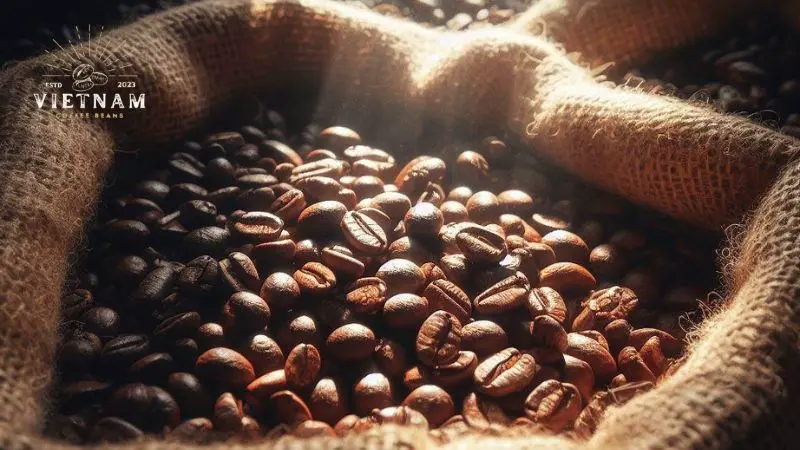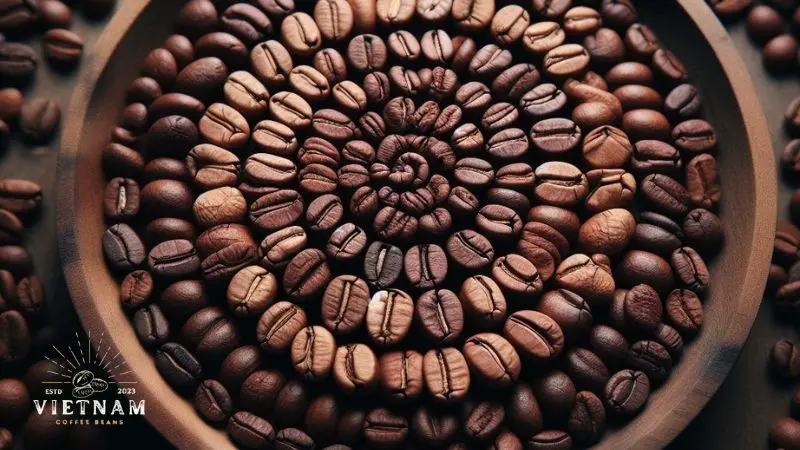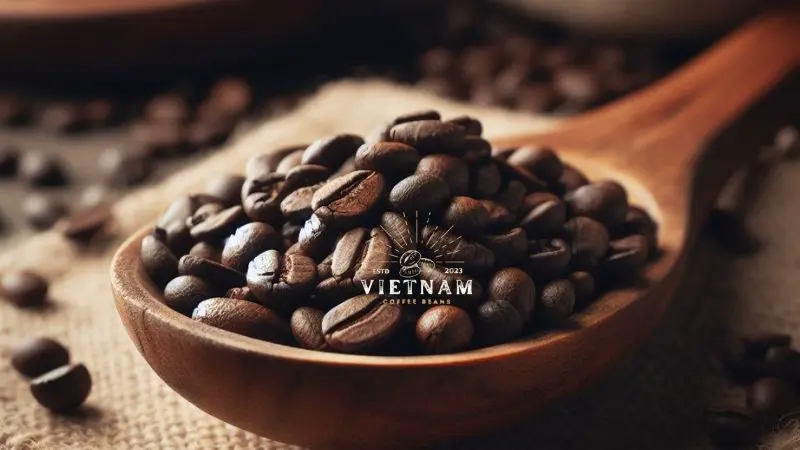
Types of Coffee Beans, Arabica Vs. Robusta Beans
As a self-proclaimed coffee connoisseur, you’re a coffee aficionado, always on the lookout to learn about the different types of beans – like Arabica, Robusta, and excelsa coffee. With so many options out there, from origins like beans native to Ethiopia or Colombia to brewing as espresso, decaf, or light roast, it can be overwhelming to navigate the vast world of coffee.
That’s why today we’re going to dive into the different four types of coffee beans. When it comes to coffee, there are generally two main coffee species: Arabica and Robusta. These two varieties differ in taste, growing conditions and popularity among consumers. Arabica beans are the most popular, making up about 60% of coffee produced globally.
Understanding the differences between them is key to finding your perfect cup of joe. But don’t worry, there are also other lesser-known varietals that offer unique flavors and characteristics worth exploring too.
Takeaways
- Arabica coffee beans, known for their nuanced flavors and aromatic profiles, offer a diverse range of taste experiences.
- Robusta beans, in contrast, embrace robust flavor profiles and strong, earthy notes, creating a distinctly bold taste.
- Various growing regions around the world, influenced by climate, altitude, and soil composition, contribute to the flavor diversity of coffee beans.
- These regions, such as Ethiopia, Colombia, and Brazil, yield beans with unique characteristics, showcasing the impact of geographical factors on coffee.
- Moreover, different processing methods, including washed, natural, and honey processing, further enhance the final flavor and aroma of the beans, adding depth and variety to the world of coffee.
What is the most common type of coffee bean?
Coffee is one of the most popular beverages in the world, with over 70 coffee-producing countries around the globe. The beans that make up your daily cup are the fruit of the coffee plant, and there are generally two main species of coffee cultivated today: Arabica & Robusta.
- Arabica beans make up around 60% of the world’s coffee production and are native to Ethiopia and South Sudan. These quality beans are known for their sweeter, more complex flavor profiles compared to other types.
- Robusta beans have a higher caffeine content and more harsh, earthy taste. They are generally considered lower quality beans, but are valued for their yield and pest resistance.
The four main cultivars of Arabica coffee are Typica, Bourbon, Caturra, and Catuai, while there are also other varieties like Excelsa and Liberica grown in smaller quantities globally.
When coffee beans are roasted and brewed as coffee or espresso, their background flavors come through to produce the final cup. Light roast beans have more bright, acidic notes while medium roast coffee develops more balanced, mellow tastes. By learning about the different coffee bean types and how they are grown, processed and prepared, you can better appreciate each sip of your favorite freshly brewed coffee.
Arabica coffee
- As previously mentioned, Arabica is the most widely used (and certainly the most heavily marketed) type of coffee in North America. This is because it actually has a sweeter, more delicate flavor and the coffee itself tends to be less acidic.
- Arabica beans are grown in areas high above sea level, especially where rainfall is plentiful. In fact, Brazil, known for its lush rainforest, is the world’s leading exporter of Arabica beans.
- The plants themselves are quite delicate and require significant pruning and constant consideration of environmental factors.
- The Arabica coffee variety is particularly susceptible to disease, so growing it in large quantities is a challenge.
- This significantly increases the cost of the bean on the global market, but many coffee drinkers around the world are happy to pay the difference due to the smoother, sweeter taste.
- One thing to note about the popular but delicate bean is that its flavor is known to diminish somewhat when served cold or mixed with milk or cream.
- While that may be the case, it’s fair to say that if you add some extra flavor to the drink, the difference probably won’t be noticeable anyway.

Robusta coffee beans
- When it comes to global production, Robusta coffee beans come second and are most popular in Europe, the Middle East and Africa. This bean lives up to its name as it is known for its strong and often bitter flavor profile.
- Robusta coffees have an extremely high caffeine content, which makes the plant significantly more resilient than the Arabica variety. This is because the caffeine acts as a natural insect repellent, eliminating a major threat to the tree.
- The coffee caniphora species is also particularly tolerant of its environment and can therefore be grown at all altitudes and climates. Due to its reputation for tasting burnt or rubbery, Robusta is generally not a very popular coffee product unless very strong coffee is a cultural norm.
- However, because Robusta is much easier to grow and harvest than Arabica beans, many farmers tend to make higher profits when they can sell Robusta beans.
- Robusta can be used for discount lines such as instant coffees and is sometimes used as a filler for dark roasts.
- By using 3 parts Arabica to 1 part Robusta in a given batch, a roaster can save up to 20% on raw bean costs. However, if you feel like this sacrifices product quality for the sake of the end result, you’re right.
- However, there are some cases where delicious, high-quality Robusta coffees find their way to grocery store shelves. These are usually single-origin coffees that are produced in small quantities by artisan roasters.
- The best Robusta coffee beans have hints of chocolate and rum in their flavor profile, but in reality they are not always readily available.
- Ultimately, if your main interest in a cup of coffee is getting a daily dose of caffeine, it’s probably just as good to grab a regular cup of Robusta and temper the taste with cream and sugar.

Different types of coffee beans
Around the world, coffee is one of the most popular beverages, brewed fresh daily in cafes, coffee shops, and homes. There are many different types of coffee beans grown globally, each with their own flavors and characteristics.
The two main species of coffee are Arabica and Robusta. Arabica beans make up about 60% of global coffee production and are native to Ethiopia and South Sudan.
There are many different varieties of Arabica cultivated, like Typica, Bourbon, Caturra and Catuai. Robusta beans have a higher caffeine content and harsher taste compared to Arabica varieties.
They are grown mostly in Southeast Asia. Other less common beans include Liberica and Excelsa. When coffee beans are roasted and brewed, their origin and variety impacts the flavor of the coffee.
Beans from places like the Kenyan Coffee Research Station or the coffee capitals of the world can produce radically different taste profiles. By learning about the different coffee varieties available, you can find your perfect cup, whether it’s decaf, iced, specialty or just your favorite coffee to start the day.
Coffea Liberica
- Liberica coffee beans are a rare treat. They are grown in very specific climates, with production far too small for farmers to scale their operations to truly serve a global market.
- Nevertheless, the beans are considered a pleasant surprise. Many who have tried the coffee compare the aroma to fruits and flowers and describe the taste as somewhat “woody”.
- There was a time when Liberica coffee was incredibly popular. Towards the end of the 19th century, a plant disease now known as “coffee rust” emerged and destroyed almost all Arabica plants around the world.
- Because coffee was already such a large commodity, both farmers and government agencies began searching for suitable substitutes. The Philippines was the first to harvest and sell the Liberica plant on a significant scale, and as the sole supplier, the country experienced enormous economic growth.
- At the time, the Philippines was a US territory, but as the economy grew, the country declared independence. As a result, the US imposed severe economic sanctions and stopped deliveries to the country.
- This ultimately led to the demise of the Liberica coffee bean in the global market as no other country was ever able to scale up and match the production that the Philippines once pioneered.
Excelsa coffee
- The type of coffee beans we are introducing today is Excelsa. Excelsa is technically a member of the Liberica family, but their species is actually incredibly diverse.
- Like Liberica coffee described above, Excelsa is grown primarily in Southeast Asia and accounts for only a small portion of global coffee production.
- Characterized by a more tart, fruity flavor, Excelsa is known for showcasing the characteristics of both light and dark roast coffees to create a unique profile often sought after by coffee lovers.

Bourbon coffee beans
- Bourbon beans were created through a natural mutation of Typica beans found on the island of Bourbon.
- The beans were discovered by the French and spread throughout Africa and South America, where the French had colonies. Bourbon beans are known for their sweet taste with a hint of caramel.
- You can find bourbon beans on Amazon and in some specialty stores. Just be careful not to confuse them with bourbon barrel beans, which have recently become available.
Catimor Coffee beans
Catimor beans are a cross between Caturra and Timor beans, hence their unique name. They were developed in Portugal in 1959 to create a disease-resistant coffee plant. The plants grow quickly and provide high yields, which promote cultivation. But they are also known to be somewhat acidic and astringent, which limits their sale.
Caturra Coffee Beans
- Caturra beans are a variety of Arabica beans that evolved naturally from Bourbon red beans in Brazil about 100 years ago.
- Today they are grown in many countries in Central and South America. Caturra plants are a high-yielding variety that grows on shorter plants, making them easier to harvest.
- This combination makes them popular with growers, and the high quality coffee they produce makes them popular with roasters. You can purchase these at some international markets or buy Caturra coffee beans online at reasonable prices.
Geisha Coffee Beans
You may also find these beans spelled Gesha if you search for it. They emerged in Gesha, Ethiopia in the 1950s and experienced a renaissance in the first years of the 21st century.
Today they are grown in Panama, Colombia, Costa Rica and Peru and are among the most expensive coffee beans you can buy. You can expect them to make a great cup of coffee, but their cost is also due to the specific conditions required to grow the best beans, coupled with the global demand and willingness to pay for the highest quality coffee. Geisha coffee beans can be found in international markets and online.
Icatu Coffee Beans
- Icatu beans are a blend of different Brazilian beans that come from both Arabica and Robusta.
- Icatu beans come in red and yellow varieties with different lineages and distinct flavors that are still evolving as planters and researchers work to perfect this relatively new variety of coffee.
- Icatu plants are highly resistant to leaf rust disease, which can dramatically affect coffee cultivation. Due to its durability, high yields and recognized high-quality coffee brews, it can be assumed that this variety will increase in popularity.
Jackson Coffee Beans
Mr. Jackson, a coffee planter in India, gave his name to these beans in the early 1900s after discovering a “new” plant on his farm.
The natural mutation was found to be resistant to coffee leaf rust disease, which still plagues coffee planters.
The plants caught the attention of the Kenyan research center, which further developed the variety. Today the beans are mainly grown in Rwanda.
Jamaican Blue Mountain
Jamaican Blue Mountain beans are a variety of Arabica beans grown in the Blue Mountains of Jamaica. They come from Typica beans brought to Jamaica in 1728 when Jamaica was a British colony.
The beans are known to produce a mild coffee flavor that has made them popular worldwide. Japan imports about 80% of these beans, although we can still get Jamaican Blue Mountain coffee beans, just expect to pay a little more than for off-the-shelf beans.
Java Coffee Beans
Okay, admit it. They thought “Java” was just a nickname for coffee. I did, until a few years ago when I took a closer look at a bag of java beans and realized that it was the type of bean that gave the package its name. They grow on the island of Java in Indonesia.
The colloquial name for coffee came about because it was once exported on a large scale. Java is not really a type of coffee but a regional style of coffee, but as we’ve said before, regional differences in climate, soil and altitude make a big difference in coffee taste. Java is known as a strong, mildly sweet coffee.
Jember Coffee Beans
Jember beans are grown and popular in Ethiopia. They are grown by Jember Coffee Company, known for its charity and sustainable practices.
The beans should be sweet and have a caramel, brown sugar, or maple flavor. While they are popular in Ethiopia, they are originally from Indonesia. Unfortunately, these beans are not easy to find.
Kent Coffee Beans
- Kent beans are another Typica variety and therefore a sub-variety of Arabica. They come from India, where they were discovered at the beginning of the 20th century as a natural mutation of Typica.
- Interestingly (I guess this depends on how deeply interested you are in coffee), this lineage has recently been called into question, as this plant was thought to have been bred in Kenya around 1911, as it is grown throughout much of East Africa.
- The plants grow best at altitudes above 1,800 meters and produce a brew that is described as velvety.
Kona Coffee Beans
Kona beans are grown on Hawaii’s Big Island on the slopes of Hualalai and Mauna Loa in the Kona District. Coffee beans have been grown in Hawaii since 1825, when they were introduced to Oahu by the island’s governor, Chief Boki. Kona coffee can be purchased anywhere in the Hawaiian Islands where tourists are found.
Just be sure to read the label as some are sold as 100% Kona coffee and others as 10% Kona coffee and the seller will not highlight the difference when selling the 10% packs. If you’re not traveling to Hawaii, you can often find the beans at select grocery stores or purchase your Kona coffee beans online.

Liberica Coffee Beans
Liberica beans come from West Africa and especially Liberia, after which the beans are named. What’s special about these beans is that they are heat tolerant and thrive at low altitudes. Today Liberica beans are mainly grown in Malaysia, Indonesia and the Philippines.
Although they only account for 2% of world production, they account for 95% of the beans grown in Malaysia. The taste of these beans is known to be rather inconsistent, which limits their worldwide popularity.

Maragatura Coffee Beans
Maragatura beans are a blend of Maragogype and Caturra beans, designed to give the beans the flavor of Maragoygype beans and the high yield of Caturra beans.
They grow mainly in Brazil, El Salvado and Nicaragua in regions above 1,400 meters altitude. They are a productive plant, but the beans require a lot of care. If you find the beans, they are said to make a good cup of coffee.
Pacamara Coffee Beans
Pacamara high mountain beans are a hybrid between Pacas (a Bourbon mutation) and Maragogype (a Typica mutation).
This type of coffee bean shows that in the wide world of coffee, all beans actually trace their origins back to Arabica and Robusta plants through a variety of mutations and hybridizations. Pacamara was founded in 1958 by the Salvadoran Institute of Coffee Research.
The aim was to take advantage of the recognized high quality coffee of Maragogype and the higher yields of Pacas. The institute tinkered with this plant for about 30 years before releasing the variety for commercial production. Pacamara coffee beans are available at a moderate price if you want to test the quality for yourself.
Ruiru Coffee Beans
- Ruiru 11 was developed in 1985 by the Kenya Coffee Research Station, one of the premier coffee research institutions in the world. This cultivar of coffee is grown mostly in Kenya.
- However, coffee experts claim that it produces lower quality coffee beans compared to other varieties developed at the research station, such as SL28 and SL 34. Ruiru 11 beans aren’t generally considered one of the most popular types for specialty coffee.
- But by learning about the different coffee varieties and how to properly brew them, you can still produce a nice cup from these beans. Some prefer lighter roasted Ruiru 11 in order to appreciate the origin flavors.
- Others brew it as decaf or iced coffee for a different experience. At the end of the day, Ruiru 11 is another variety that adds to the diversity of coffee in the world.
Sagada Coffee Beans
- Sagada beans are a variety of Typica Arabica beans that have been grown in the highlands of the Sagada District of the Philippines since about 1900. Typica is one of the two main coffee species along with Robusta.
- Although Sagada beans have been cultivated in the Philippines for over a century, they are not as widely grown or popular worldwide as other coffee varieties. With the help of recent government initiatives, Sagada beans are slowly being produced on a larger scale domestically.
- However, these quality beans native to the Philippines are still difficult to find in most parts of the world. By learning about the different types of coffee beans grown globally, you can better appreciate the unique qualities of beans like Sagada.
- Their rarity and distinctive flavor when brewed as coffee, espresso or even decaf make them a special experience for coffee aficionados. With proper cultivation and production, Sagada beans have the potential to become more popular among the esteemed coffee beans of the world.
SL-28 Coffee Beans
- SL-28 wins the award for least imaginative name! The SL stands for Scott Agricultural Laboratories in Kenya, one of the premier coffee research institutions in the world.
- This cultivar of Arabica coffee was developed around 1930 from Tanganyika beans native to Tanzania. SL-28 beans are designed to be disease resistant and produce a sweet, fruity taste with a strong aroma when brewed.
- They are generally considered one of the most popular specialty coffee beans. You can find these quality beans online at many specialty coffee retailers or brew them yourself as a delicious espresso.
SL-34 Coffee Beans
- SL-34 is another coffee variety developed by Scott Labs in the 1920s. Today SL-34 beans are Kenya’s most important coffee export.
- Although surprisingly prone to coffee diseases like coffee berry disease, these beans produce a high-quality coffee known for its sweet, fruity flavor notes.
- SL-34 is a genetic cultivar that became one of the most widely grown and popular beans worldwide. By learning about the different types of coffee beans like SL-28 and SL-34 and their taste profiles, you can explore the diversity of coffee and find your perfect brew, whether regular, iced or decaf.
Sumatra Coffee Beans
- Sumatra coffee beans come from the island of Sumatra in Indonesia. They are a popular variety of Arabica coffee bean and known for their rich, earthy flavor and smooth body.
- The beans are generally grown in small farms and cooperatives, mainly in the northern regions of the island. Sumatra beans are wet-hulled during processing, which gives them a more spicy and herbal taste profile compared to other coffee bean varieties.
- They are frequently used for espresso blends but also make a full-bodied brewed coffee. Sumatra beans are not as widely available as beans from other regions, but are considered high quality and one of the most popular types of gourmet coffee beans.
Tanzania Peaberry Coffee Beans
- Tanzania Peaberry refers to a natural mutation of coffee beans that occurs occasionally in Tanzania. Instead of the usual flat-sided bean, peaberries are rounded like a pea, giving them a signature look.
- These beans are grown at high altitudes in volcanic soil around Mount Kilimanjaro and Mount Meru, where the bourbon variety of Arabica is most common.
- Though not extremely widespread, Tanzania Peaberry is prized by specialty coffee drinkers for its rich, winy acidity, intense aroma and complex flavor that shines when brewed on its own. It makes an exceptional light roasted single-origin coffee.
- The peaberry variation combined with Tanzania’s excellent coffee growing conditions produce some of the most sought after gourmet coffee beans.
Timor Coffee Beans
- The small island of Timor produces about 11 million pounds of its own unique beans each year, accounting for about 0.1% of global production. Nevertheless, their beans are an important export crop for the poor country with 1.3 million inhabitants.
- The beans are a cross between Arabica and Robusta beans and are grown on small farms in East Timor, where the hand-picked beans are known for their sweetness and mild acidity.
Typica Coffee Beans
- Typica beans are probably the most commonly grown variety of Arabica beans as there are numerous sub-varieties of Typica such as Mundo Novo and Jamaica Blue Mountain.
- Typica beans originated in Yemen but were spread around the world by early traders and explorers. They came to India via traders on the Silk Road and to the Philippines via Spanish explorers.
- Because the plants were grown in different regions, the different climates, elevations, humidity levels and soils led to the abundance of Typica varieties we have today.

Frequently Asked Questions
Conclusion
So, there you have it – the different types of coffee beans like Arabica, Robusta, and excelsa and their unique characteristics. Whether you prefer a smooth and nuanced cup of Arabica or a bold and robust Robusta, understanding the differences between these two main types of beans with varying caffeine content will help you make more informed choices when selecting your next bag of coffee to brew using methods like pour over, French press or espresso.
And let’s not forget about the other varietals out there – from fruity Ethiopian Yirgacheffe to earthy Sumatra Mandheling, exploring different types of beans can be an exciting daily grind for any coffee lover looking to make drinks like cappuccino, café latte, cortado or New Orleans iced coffee.
So, go ahead, try something new and find your perfect cup of joe. Experiment with light, medium and dark roasts, cold brew, espresso, and espresso-based drinks topped with microfoam or whipped cream.
Hope you get useful information from the article, if you have any questions or want to read more articles, please visit the website: vietnamcoffeebeans.
